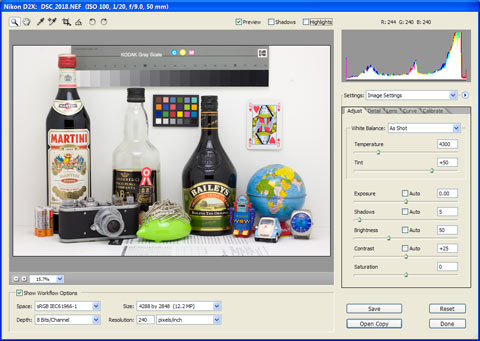Making the jump from JPEG to RAW

While shooting RAW comes with some mild inconveniences, the benefits are nearly endless. From the ability to correct mistakes, to future proofing your images, RAW files offer tremendous flexibility.
 Making the jump from JPEG to RAW will be one of the biggest jumps for any aspiring photographer as it changes almost every aspect of how you approach the camera. The high priority items such as exposure and white balance no longer matter as much, while items you may have frequently overlooked like editing and processing now become imperative. Unfortunately, there are some drawbacks to the switch, but most tend to be minor inconveniences, which is a worthy tradeoff for the tremendous potential of a RAW photograph.
Making the jump from JPEG to RAW will be one of the biggest jumps for any aspiring photographer as it changes almost every aspect of how you approach the camera. The high priority items such as exposure and white balance no longer matter as much, while items you may have frequently overlooked like editing and processing now become imperative. Unfortunately, there are some drawbacks to the switch, but most tend to be minor inconveniences, which is a worthy tradeoff for the tremendous potential of a RAW photograph.
The Negatives
I will begin with the negatives, and although they may sound annoying at first, they are miniscule in light of the benefits to shooting RAW.
File size was one of the largest drawbacks for me. While JPEG files are often smaller than 5mb each, a RAW file will typically range from 20-30mb each. When you are dealing with potentially thousands of photographs, space will become an issue very quickly. Fortunately, computer hard drives are far less expensive than they used to be and finding 1-2TB external drive for around $100 is not difficult. In a later lesson we will explore some easy methods of dealing with large amounts of files in a limited space environment.
A JPEG picture is a ‘processed’ photograph, thus, whatever processing the camera performs to each picture will now be stripped away. This processing will now take place when you edit the photographs later. Typically a camera will perform some tonal correction, sharpening, and noise reduction during JPEG processing. As a result, when you first view your RAW photographs, they may not look quite as nice as the JPEG processed files, but that is because your job is not yet complete. Every RAW file must be processed before being rendered complete. This processing can take place in a variety of editing applications though one of the best and most popular is Adobe Lightroom. During this editing process you will need to perform some basic adjustments in order to have a ‘finished’ look to your photographs. While the sound of editing EVERY photograph may sound like a horrible nightmare, software like Lightroom has made this process very simple.
The Positives
The largest reason to shoot RAW for all of your photographs is that the positives are virtually endless. A RAW file contains so much information that can be changed or altered at will with almost no loss in quality. As a result, you may decide to change your photograph in so many ways to depict a certain look or tone in your image. You also have the ability to focus less on items such as white balance, which may be altered later, and spend more time concentrating on composition and focusing.
Obtaining a correct white balance can be difficult, especially in an environment where colors may be constantly changing. Shooting outdoors where a random cloud can alter the color temperature by 2000k, or following a subject through different rooms each with unique lighting fixtures will often yield varied results and improper tones. Shooting in RAW allows complete control over the temperature values in post where instead of having to worry about settings during a demanding shoot, you may set the camera to auto white balance and focus more intently on other aspects of the camera.
RAW files also allow exposure control. While you should always aim for correct exposure during recording, the ability to alter exposure 1-3 full stops can save an incorrectly exposed image from the trash can. Altering the exposure may lead to increases in noise or loss of color when pushed, but I have constantly been amazed with my ability to make large exposure corrections with very little noticeable loss in quality.
Future proofing your photographs may be the most important reason to shoot RAW. Digital photography is still young after all, and the ability to make large modifications to photographs without decreasing the quality is progressing quickly. Even in the last 5 years, photographs that were unusable 5 years ago because of the high amounts of noise and grain present in high ISO photographs, may be completely saved due to the impressive noise reduction filters present in new editing software versions. In the near future it may be possible to even correct out of focus images during the editing process. Not only does technology change, your abilities as a photographer and an editor will progress over time. The ability to return to old photographs and apply new editing techniques and abilities is priceless.
While shooting RAW comes with some mild inconveniences, the benefits are nearly endless. From the ability to correct mistakes, to future proofing your images, RAW files offer tremendous flexibility. Most cameras also allow RAW+JPEG shooting so if shooting only RAW still makes you worry, shoot both and save the raw files for later, you will not regret it.





